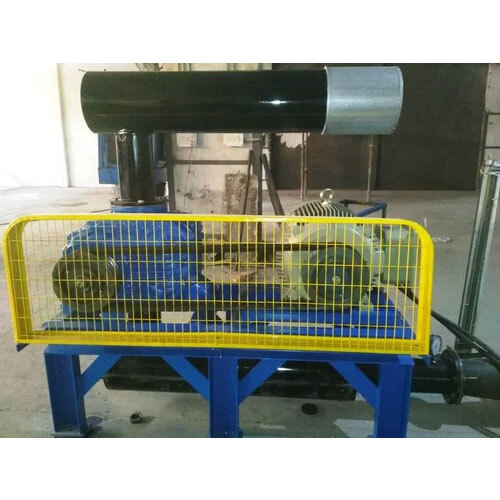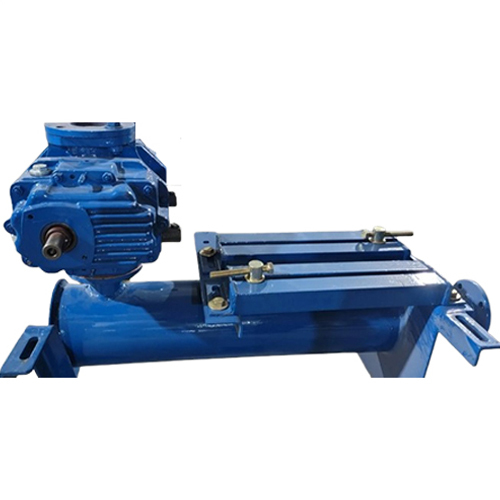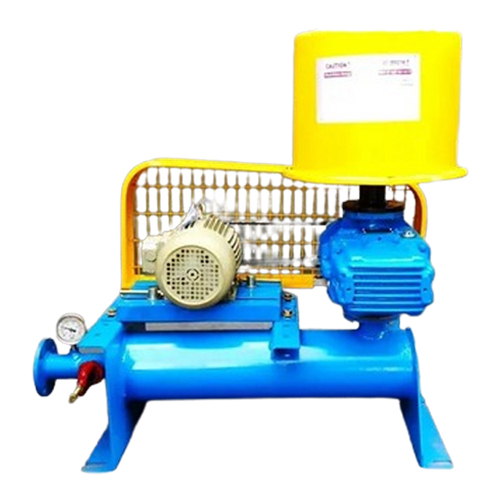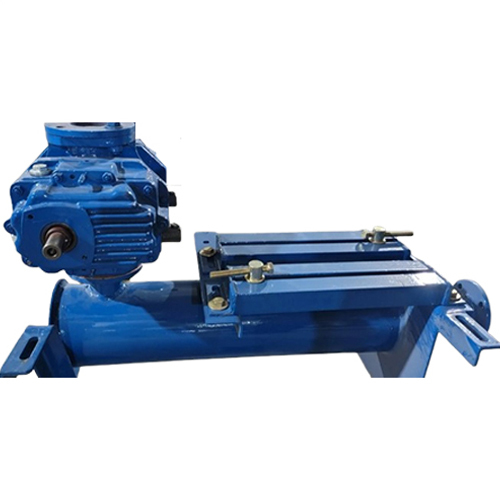Tri Lobe Water Cooled Blower
89998.0 INR/Unit
Product Details:
- Color Blue
- Usage Industrial
- Product Type Tri Lobe Water Cooled Blower
- Material Metal
- Pressure Medium Pressure
- Click to View more
X
Tri Lobe Water Cooled Blower Price And Quantity
- 1 Unit
- 89998.0 INR/Unit
Tri Lobe Water Cooled Blower Product Specifications
- Blue
- Industrial
- Tri Lobe Water Cooled Blower
- Medium Pressure
- Metal
Tri Lobe Water Cooled Blower Trade Information
- 100 Unit Per Month
- 2 Week
- No
- Contact us for information regarding our sample policy
- All India
Product Description
A Tri Lobe Water-Cooled Blower is a specialized type of positive displacement blower used in various industrial applications, including material handling, air or gas compression, and ventilation. The "Tri Lobe" refers to the shape of the rotors inside the blower, which have three lobes, unlike traditional rotary blowers that may have two or more lobes.
Key Features of Tri Lobe Water-Cooled Blowers:
-
Tri Lobe Design:
- The three-lobed rotor design allows for smoother airflow and reduced pulsation, which results in quieter operation and more consistent air or gas delivery compared to other blower designs. This makes tri lobe blowers particularly useful in sensitive applications requiring steady air pressure.
-
Water-Cooled:
- These blowers are designed to operate in environments where they may generate a significant amount of heat. The water-cooling system helps dissipate heat from the blowers internal components, particularly the rotors and casing. This cooling mechanism helps maintain optimal operating temperatures, preventing overheating and ensuring the longevity and efficiency of the blower.
-
Higher Efficiency:
- Tri Lobe water-cooled blowers tend to offer higher efficiency levels because of their smoother operation and better heat management. Cooling the blower with water reduces the need for additional air-cooling systems, which can be less efficient.
-
Low Noise:
- The tri-lobe design, coupled with water cooling, can significantly reduce the noise generated during operation. This makes these blowers ideal for environments where noise control is critical, such as in residential areas or noise-sensitive industrial processes.
-
Reduced Pulsation and Vibration:
- The unique design of the tri-lobe rotor helps minimize pulsation and vibration during operation. This contributes to more stable air/gas flow and reduces the wear and tear on other components, which can extend the overall lifespan of the blower.
-
Durability:
- Tri Lobe water-cooled blowers are often made from robust materials such as cast iron or aluminum alloys, designed to withstand high pressures and operational stresses. The water cooling also contributes to preventing damage from excessive heat.
Applications:
Tri Lobe Water Cooled Blowers are widely used in industries such as:
- Wastewater Treatment: For aeration in sewage treatment plants, where consistent airflow is necessary to support biological processes.
- Pneumatic Conveying: To transport materials through pipes using air, as the smooth airflow reduces the risk of damage to the material.
- HVAC: In large ventilation systems where quiet, efficient, and reliable airflow is needed.
- Industrial Vacuum Systems: For cleaning and material handling processes in factories and plants.
- Aquarium Systems: To aerate large water bodies, such as fish tanks or ponds, providing sufficient oxygenation for aquatic life.
Advantages:
- Improved Energy Efficiency: Because of the tri-lobe design and water cooling, these blowers often consume less power for the same output, improving energy efficiency.
- Longer Operational Life: Water cooling reduces thermal stress on the components, which helps prolong the life of the blower.
- Better Control of Flow and Pressure: The smoother flow of air or gas ensures that pressures are consistent, and that fluctuations in the system are minimized.
Maintenance Considerations:
- Cooling System: Regular checks on the water-cooling system (such as the water pump, cooling lines, and heat exchangers) are essential to ensure proper heat dissipation.
- Rotor Wear: Although tri-lobe blowers are designed to be durable, the rotors can wear over time, especially under high operating loads. Periodic inspection and maintenance are necessary.
- Lubrication: Ensuring that the moving parts of the blower, such as bearings and seals, are properly lubricated can prevent wear and increase efficiency.
| Blower Type | Twin Lobe Blower |
| Air Flow | >1000 CFM |
| Fan Speed | 1000-2000 rpm |
| Usage/Application | Industrial |
| Color | Blue ( Base ) |
| Type | BR24 Series |
| Warranty | 12 Months |
| Material | CIFG 260, EN-19, BS: 970, EN353 |
| Pressure | 0.1 kg/cm2 to 1 kg/cm2 |
| Capacity Type | 1800 m3/hr to 4000 m3/hr |
Tell us about your requirement

Price:
Quantity
Select Unit
- 50
- 100
- 200
- 250
- 500
- 1000+
Additional detail
Mobile number
Email








